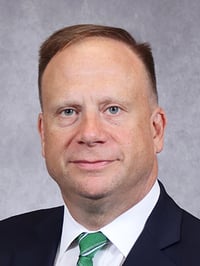If Student Success is predicated on an institution’s capacity to serve the needs of the students it matriculates, then changes in students’ expectations and needs must be met with corresponding changes to the structure and functions of the university.
 Business experts and leadership gurus have long explained how saying “My door is always open” is not a sufficient method for getting open and honest feedback from employees and stakeholders. It puts the onus on someone to speak up when they disagree, are confused, or need help. It requires a person to go to your office – your territory, so to speak – to engage with you. It reinforces the hierarchical relationship between the person making the offer and the person hearing it. And, they explain, it makes clear that you’re intentionally leaving the door open for them, but perhaps only for the moment.
Business experts and leadership gurus have long explained how saying “My door is always open” is not a sufficient method for getting open and honest feedback from employees and stakeholders. It puts the onus on someone to speak up when they disagree, are confused, or need help. It requires a person to go to your office – your territory, so to speak – to engage with you. It reinforces the hierarchical relationship between the person making the offer and the person hearing it. And, they explain, it makes clear that you’re intentionally leaving the door open for them, but perhaps only for the moment.
Lately I have been hearing and reading a lot about so-called “help-seeking behaviors,” and I am reminded of the criticisms of the my-door-is-always-open approach to encouraging engagement. The term “help-seeking behavior” is commonly used in health care contexts, especially with regard to mental and emotional help. It has also been studied and described in the context of student success to describe students’ willingness and ability to seek help from their institutions when they need it.
In an article published last year, Jacqueline von Spiegel (Program Manager for the Dennis Learning Center at Ohio State University) asserted, “To be successful in college, students often need to seek help from others…” However, she went on to explain, help-seeking is a complex process that requires emotion, social, and cognitive competences many students have not yet acquired, and it is impacted by students’ identities and their relationship to the instructor and the institution. Help-seeking behavior is critical to Student Success, and we expect that students either show up with it or somehow acquire it so that they can be successful.
In a previous post, I claimed that we needed to abandon old notions of a student’s success that served primarily as moral claims about a given student’s willingness to do the things necessary to progress toward graduation. Similarly, I think that explaining away poor academic performance as merely the decline in some students’ willingness to engage in help-seeking behaviors inappropriately places responsibility for a mismatch of an institution’s norms and functions with the needs of its students on the shoulders of the students themselves.
The pandemic has had powerful impacts on students and on their behaviors and expectations. If Student Success is predicated on an institution’s capacity to serve the needs of the students it matriculates, then changes in students’ expectations and needs must be met with corresponding changes to the structure and functions of the university. It appears obvious that at least some students are much less likely to engage in help-seeking behaviors than were their predecessors, and there are plenty of explanations why (including this recent piece in the New York Times that argued the absolute necessity of returning to face-to-face instruction).
An open-door policy for student support is no longer sufficient to meet our students’ needs, and it perhaps never was. The direct and indirect effects of the pandemic, socio-cultural diversity among our students, and fundamental changes in the learning environments and social development of our students over the last two years requires us to be more intrusive in our support of students. More frequent measurements of student progress and direct engagement with students who may not even realize they are failing to progress as expected now appear necessary, and these changes will aid students who – even before the pandemic – had not yet developed the skills of help-seeking.
While we are seeing troubling signs of difficulty among our students – such as increased probation rates and decreased use of help rooms – we are also seeing very effective tactics for meeting students’ new needs. Some faculty are using their teaching assistants and undergraduate learning assistants to identify and engage with students who are starting to show signs that they may not be progressing toward intended learning outcomes. Some are leveraging skills they learned during the pandemic to offer remote opportunities for students to engage with course instructors. In a recent conversation with a student and her parents, the student told me that the one professor she believed “knew her better than any professor ever” was the instructor who taught her asynchronous, online mathematics class. When I asked her how that could possibly be true, she told me how students and the instructor exchanged video messages to one another throughout the semester, effectively allowing the instructor to have semester-long, one-on-one conversations with every student. Far from encouraging students to hide behind technology, this instructor harnessed technology to cultivate engagement.
All of this reminds me that becoming a world-leading Student Success institution isn’t a one-and-done effort. It is an ongoing process in which we constantly seek to refine and improve ourselves and MSU to meet the everchanging needs of our students.
Feedback and suggestions, especially from the MSU community, welcome at largent@msu.edu.